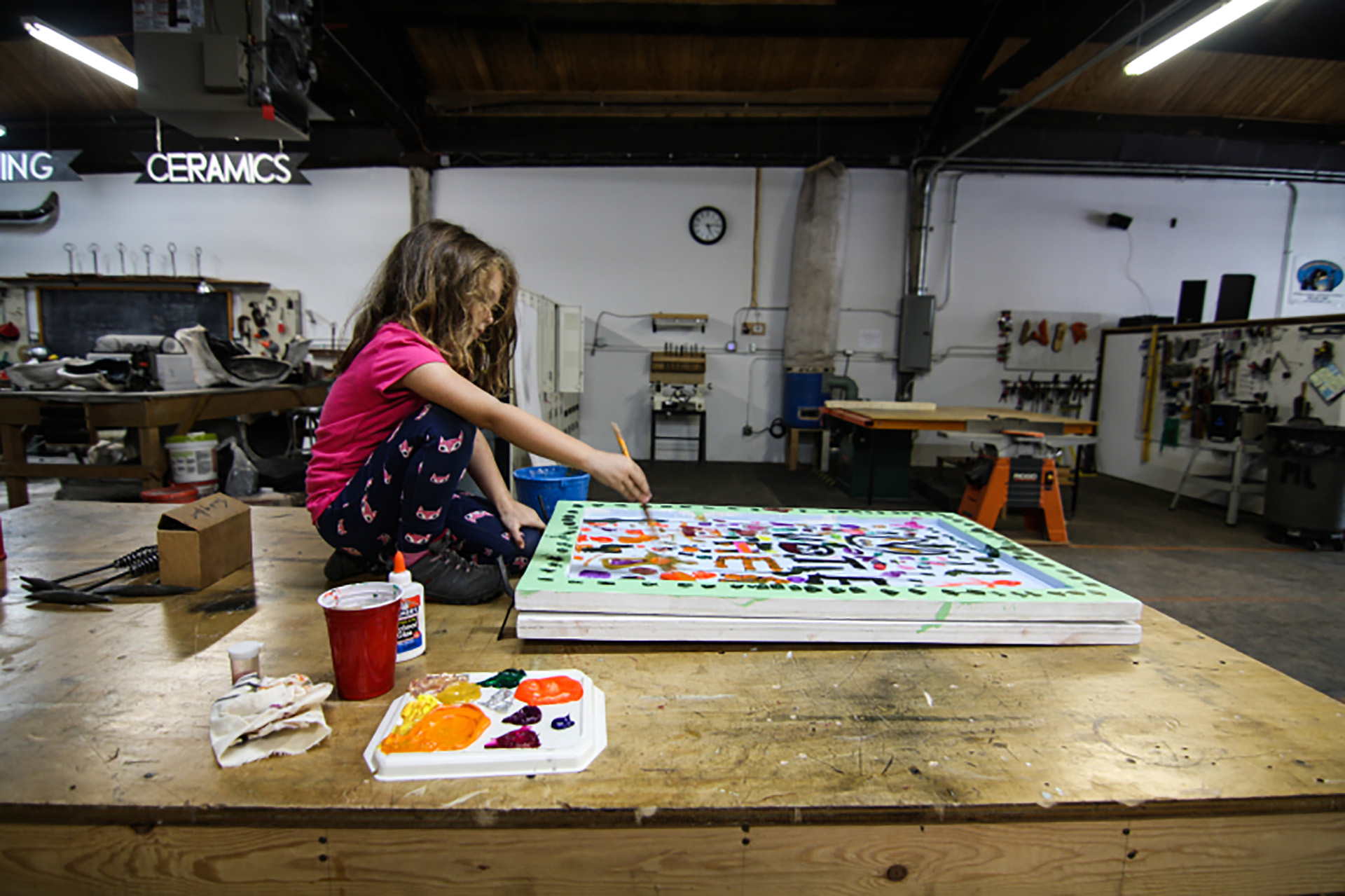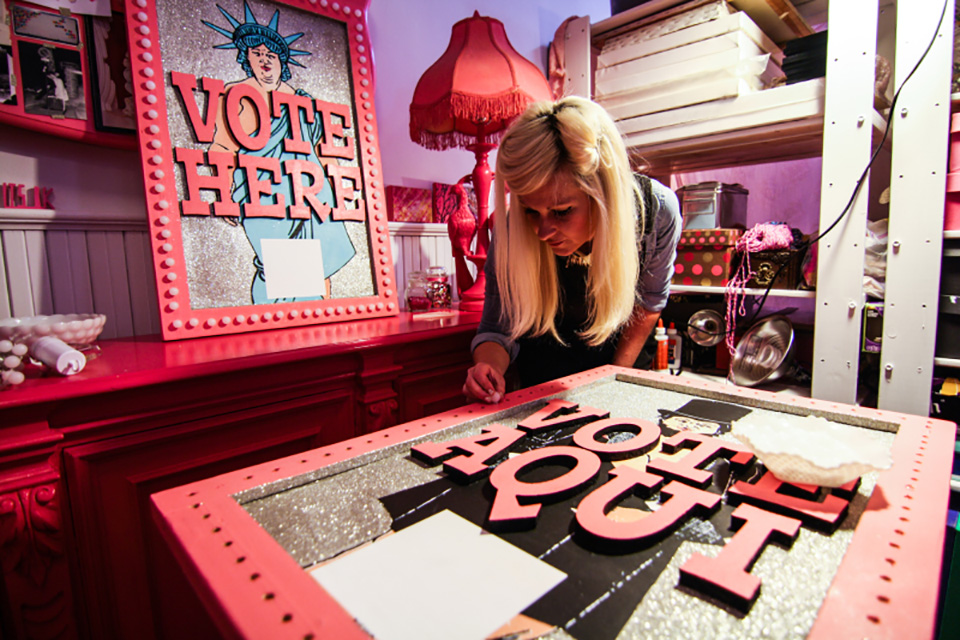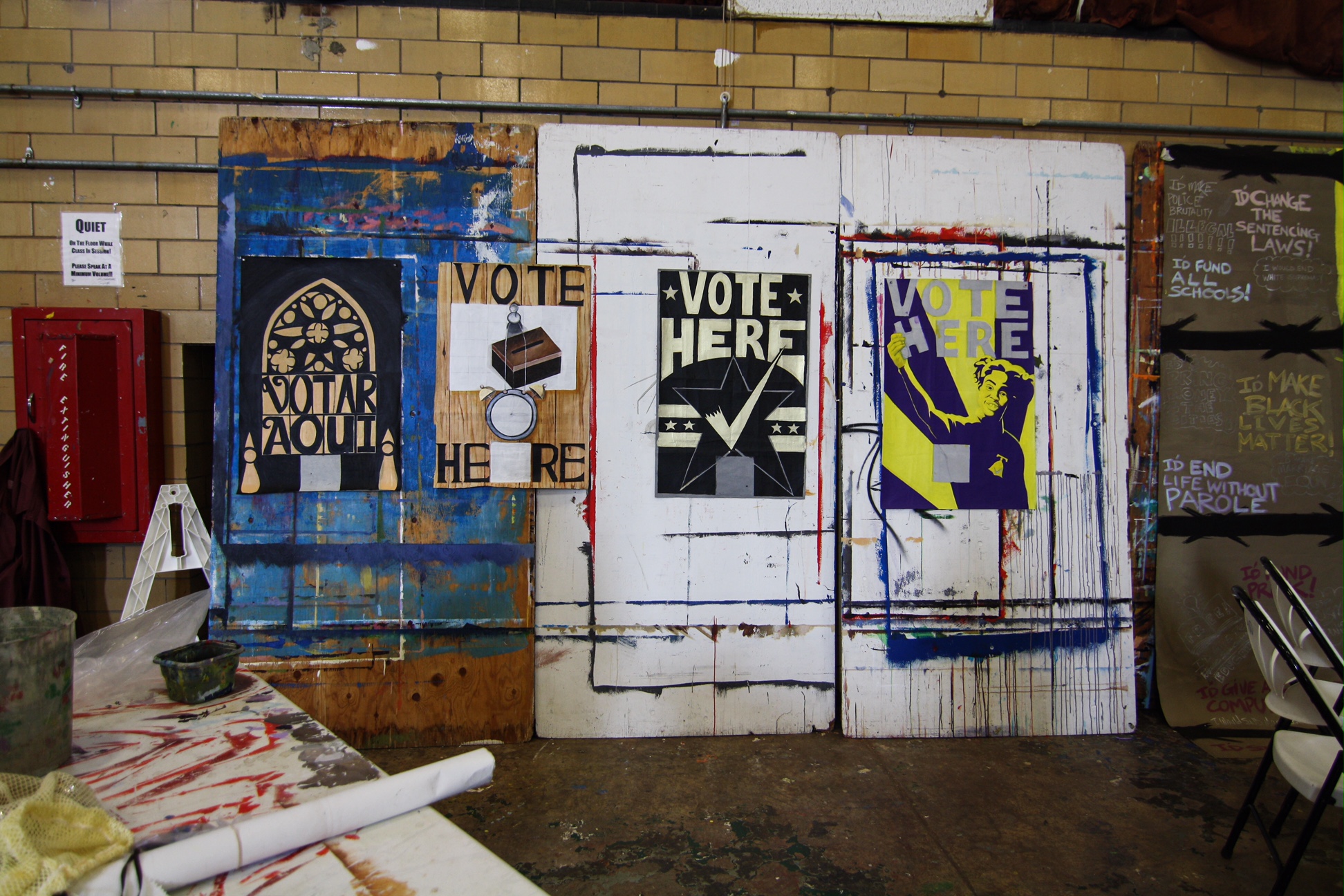
Next Stop: Democracy! seeks to find out if public art can increase civic engagement
Lansie Sylvia is project director and Kat York is project assistant for Next Stop: Democracy!, a winner of the 2015 Knight Cities Challenge, which seeks the best ideas to make one or more of the 26 Knight communities more successful. Apply at knightcities.org. Credit: Photos by Conrad Benner, Community Catalyst for nextstopdemocracy.com.
This year, we celebrate the 50th anniversary of the historic Voting Rights Act, yet voter participation rates in the U.S. are at historic lows. Instead of being an exuberant celebration of civil rights, the experience of voting is often frustrating, bureaucratic and dreary. Next Stop: Democracy! is part of the inaugural Knight Cities Challenge, and we aim to transform the experience of voting in Philadelphia using public art and social media.

When disengagement becomes the norm
Low voter turnout for municipal elections is becoming an endemic problem in cities across the country. Here in Philadelphia, the 2015 mayoral primary drew only 27 percent of registered voters. Even worse: In Philly, millennials (ages 18 to 34) make up about 32 percent of the total electorate but only 14 percent of people who voted in the last election. No matter which way you slice it, Philadelphians seem barely civically engaged. Fewer and fewer voters believe that turning out will make a difference.
Low voter turnout is not a new phenomenon. According to Philadelphia City Commissioner Al Schmidt, 41 percent of eligible Philadelphia voters turned out for the 2010 gubernatorial election. In 2011, only 20 percent turned out for the mayoral election, with even smaller numbers (approximately 12 percent) casting votes for the district attorney and city controller positions.
What’s going on here? Unfortunately, no one knows for sure. Various researchers have speculated as to why people aren’t showing up on Election Day. Racial and sociopolitical shifts may be to blame, or perhaps increased stringency around elections has made the process too painful for most urbanites to stomach.
Who took out the joy?
The feeling that voting is a drag isn’t just anecdotal: The 2014 Presidential Commission on Election Administration found that inconvenience factored most heavily into eligible voter participation. Plus, a Knight Foundation report this year found that young people who did not vote didn’t feel attached to their communities, and that 7 percent reported not voting because they were unable to locate their polling place.
In Philadelphia, many polling places are difficult to find, hidden deep in the recesses of schools, churches and community centers located on side streets. The required paper signage identifying polling places is often hidden from view for anyone on the sidewalks. Ted Selker, a University of California Berkeley professor and computer scientist, warns against the “damage incurred by the Sharpie” in these ad-hoc voting spaces. Selker believes that inadequate and misleading signs can make polling places difficult to locate. Handwritten signs can cause confusion or be ignored by the electorate—especially when they aren’t strategically placed.

If certain “inconveniences” cannot be avoided (long lines, not having the day off from work, etc.), how can the arts help to transform the voting experience from one of frustration to one of deep satisfaction? And if a significant percentage of people do not vote because they are unable to locate their polling places, can creative signage draw them in and bolster turnout?
A new look for Election Day
Next Stop: Democracy! aims to use public art to increase civic engagement and voter satisfaction. Produced by Here’s My Chance, a creative agency in Philadelphia that works exclusively with nonprofits and socially responsible businesses, we hired more than 60 of Philadelphia’s most talented artists to create bright, bold signage to direct voters towards their polling places on Election Day this Nov. 3. Each standard-sized sign says “VOTE HERE” on one side and “VOTE AQUI” on the other, and each one is unique in its color, design, and energy.

We know that individuals are effectively motivated to vote by social incentive and peer pressure, which is why we’re using highly visual social media to bolster our project. We hired Conrad Benner, a venerable street art blogger and one of Philly’s most popular Instagrammers, to curate our artist selection and grow our social media presence. We knew from the start that “owning” our hashtag was important, so as soon as we started posting we were always tagging our content with #VoteNov3rd.
All of our social media content has been bold, celebratory and exuberant. We even went out of our way to create a gallery show of all 60 signs for Design Philadelphia, appropriately titled “Signs of Change.” The Oct. 14 show was a smashing success; more than 300 attendees came to see the signs and learn more about the project. By creating an open, dialogue-driven atmosphere, we sought to educate our peers using positive pressure and robust visual examples.
The need to reinvigorate voter turnout is apparent in the United States. Given Philadelphia’s strong public art programs and abundance of artists, investigating the arts’ impact on voter turnout is an exciting new opportunity for the 2015 municipal election. We’re looking forward to sharing what we’ve learned with the larger Knight community after Election Day. See you at the polls and remember to #VoteNov3rd.
Apply to the Knight Cities Challenge, a $5 million initiative to make the 26 Knight communities more successful. For the latest information on the challenge, be sure to follow @knightfdn and #knightcities on Twitter or sign up for our email newsletter. Send questions to [email protected]. And you can peruse the winners of the first Knight Cities Challenge and apply – by noon ET on Tuesday, Oct. 27, 2015 – at knightcities.org.
Recent Content
-
Communitiesarticle ·
-
Communitiesarticle ·
-
Communitiesarticle ·


